
@’s by THE VAULT Writer Sam Sarkar!
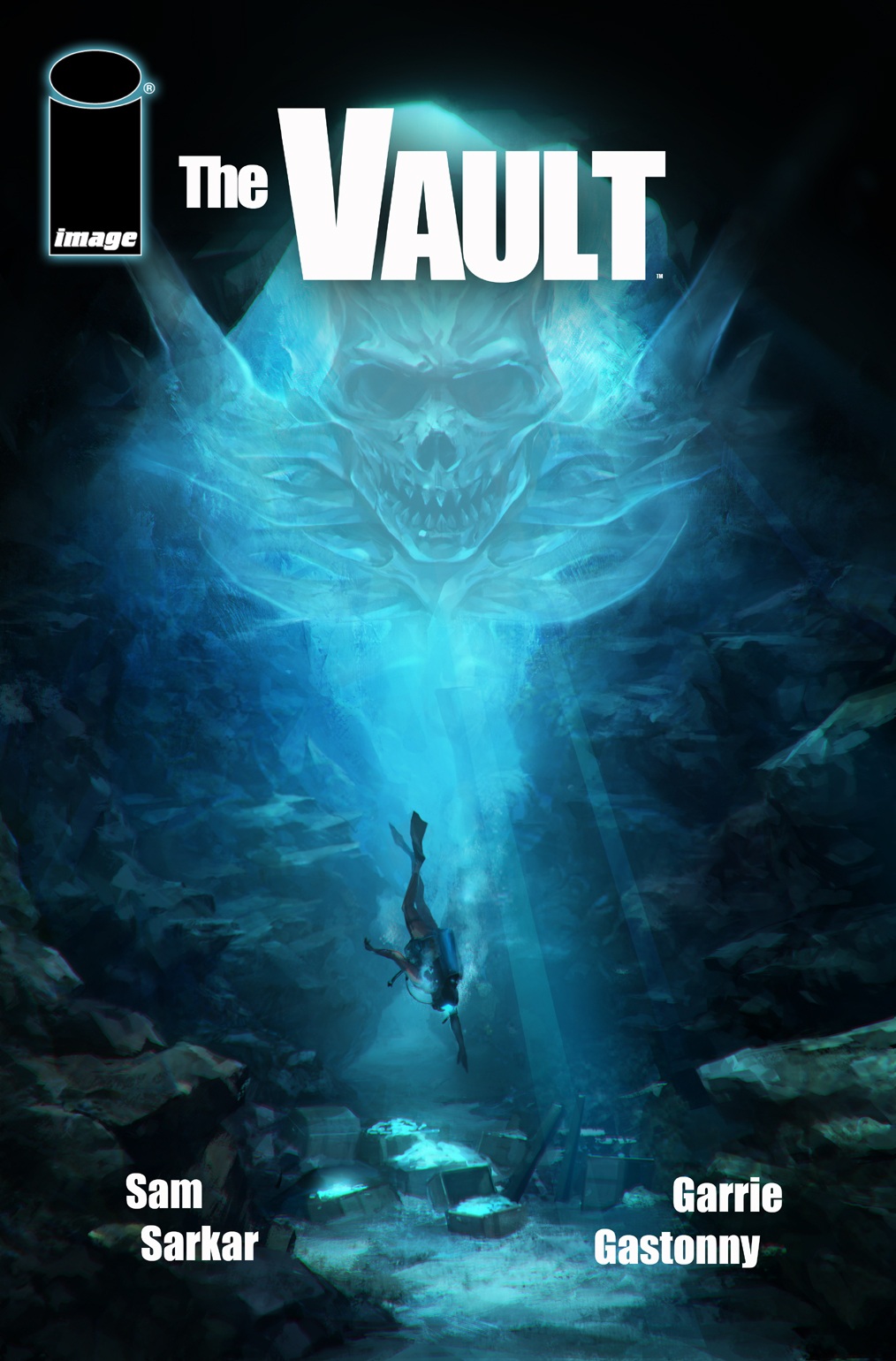 RUSS SHEATH (RS): Sam, Where did the concept for THE VAULT come from ?
RUSS SHEATH (RS): Sam, Where did the concept for THE VAULT come from ?SAM SARKAR (SS): Originally it was me growing up in Nova Scotia near the Oak Island treasure pit.
The treasure pit is a famous piece of Nova Scotian and Canadian folk lore and it’s been around for a couple of hundred years and been the subject of documentaries and other stories and it’s always been imagined that it contains some fantastic amount of treasure because of how elaborate it is, or else something very valuable either politically or symbolically, such as Knights Templar treasure or the resting place of the Ark of the Covenant, all kinds of crazy stuff.
As a teenager I started thinking of it in a darker way and the first time I thought about doing something with it I guess I was about 16. I’m 44 now, so if you work that out to an amount on an hourly basis, I would never amount to earning much from my work on THE VAULT (laughs).
RS: There are a number of particularly high profile treasure hunting stories out there--for example Tomb Raider, the Indiana Jones stories and so on. Was that a consideration when you were writing THE VAULT?
SS: No, because as you say, treasure hunting is the structure around something that’s much, much larger and it’s a piece of mythology that I’ve been thinking about for a long, long time. I love all kinds of ancient mythology and religious studies and I’ve always been fascinated by trying to find common roots between them.
They [the characters] are going to struggle with what they have brought up and basically trying to make a decision about it. They will have to make a decision about whether they handle it as a piece of treasure or as an archeological artifact, which is a realistic thing to think about. That dilemma forms the first major schism between the group, even the main characters, Michael and Gabrielle, who are the two main characters at the beginning of the story, are at odds on what to do about it.
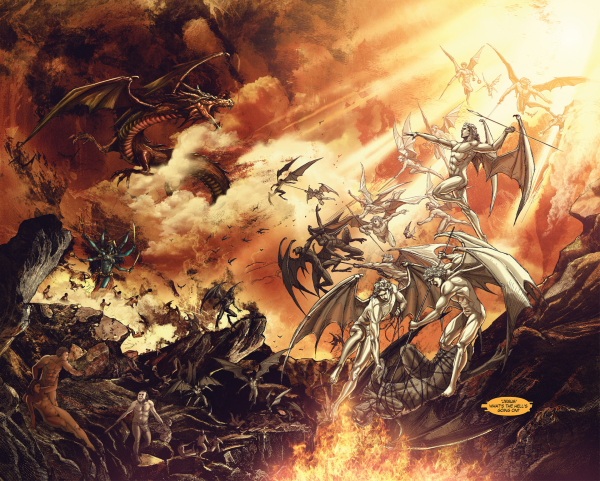 Their relationship is very complicated, as most long relationships often get. They have been colleagues for 15 years or more but they have secrets from one another, but they don’t completely see eye to eye on what to do and its really interesting to see how that plays out and the secrets between the two of them, how those play out too.
Their relationship is very complicated, as most long relationships often get. They have been colleagues for 15 years or more but they have secrets from one another, but they don’t completely see eye to eye on what to do and its really interesting to see how that plays out and the secrets between the two of them, how those play out too.RS: One of the interesting things that grabbed me about the book, and I don’t want to use the word ‘techie’, but it’s evident that there was a lot of research undertaken for the book, particularly with the technology used.
SS: I’ve always been interested and fascinated in technology and the ramifications of technology. One of the influences for this was “2001: A Space Odyssey”. When you look at that movie, the future that’s laid out in that film is so dead on, even in terms of flat screen technology and tablets. When I was reading about the movie they had a team of consultants that looked at something like 35 pieces of technology that they showed in the movie and talked about in Arthur C. Clarke’s novel. It’s still fairly seamless to the story, the whole thing about HAL and artificial intelligence and the whole thing about creating gravity by centrifugal force, those kind of things in the movie you don’t notice, but there’s so much detail in the research that goes into that. Similarly in THE VAULT, they have to go pretty deep under water in the exploration of the pit.
When you go deep under water, under 50 feet for an extended period of time, you start tohave all these different issues of decompression and nitrogen build up in the blood so I researched this thing that really exists, a deep sea suit that’s almost like a mini submarine, it’s not like a suit at all. With it you can go up and down quickly, you don’t decompress, you breathe normal atmospheric pressure and it’s a lot easier to deal with but it’s also very, very expensive compared to what a normal diving suit would cost. The cost is offset by the fact that you don’t need a decompression chamber.
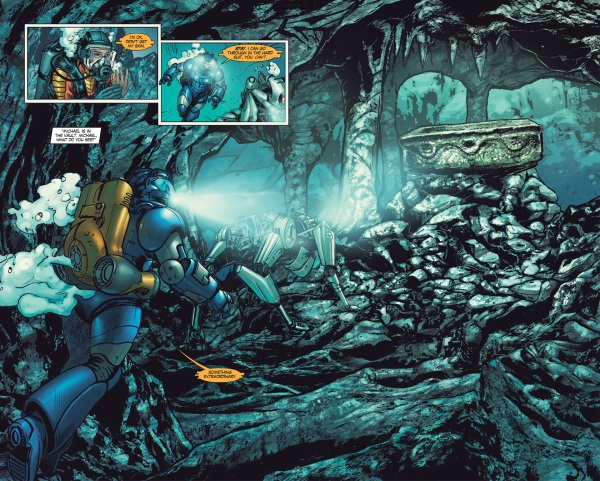 RS: You have talked about “2001: A Space Odyssey”--what other influences have you drawn upon for THE VAULT?
RS: You have talked about “2001: A Space Odyssey”--what other influences have you drawn upon for THE VAULT?As you can tell from the opening pages, there’s a little “Paradise Lost” in there, HP Lovecraft, “Alien”, “Terminator”. All those cool science fiction ideas. “The Thing”!There’s a major influence that runs through a lot of things that I do, which is cave art. Cave and rock art I became fascinated and obsessed by. The cave paintings in southern France, I recently went to see the movie that Werner Herzog did “The Cave of Forgotten Dreams” and there’s something about the imagery in those caves and the impact of what they really mean, in some ways it’s earth-shattering! We don’t quite yet appreciate how powerful the message is that they share. I’ve been inside one in France and it really is not like seeing a depiction of rock art. They are so old, the one I was in was twelve to fourteen thousand years old and it really informs you that we haven’t changed a lot, the species we are today is the same as the one that’s been around for thirty thousand years, and it leaves you with a lot of questions. That’s a major influence for me.
RS: With your background in film and television, is there always a background into how that might translate into other media?
SS: Yes! It’s about how many different ways there are to tell stories. I love the way that stories get told in video games and movies and television shows, in books and novels and comics. I remember when I was a kid, after “Star Wars”, I would read anything Star Wars, the Alan Dean Foster books, “Splinter of the Minds Eye”, anything to do with that universe, not just the movies. The mythological world that get exposed in THE VAULT is so big there are many ways to attack it. I hope that people want to play the game, read the book, read the comic book and see the movie. There are a lot of different stories that shoot out from this main one.
RS: Also in your bio, I read that you were a writer on 90210, which might surprise readers of THE VAULT.
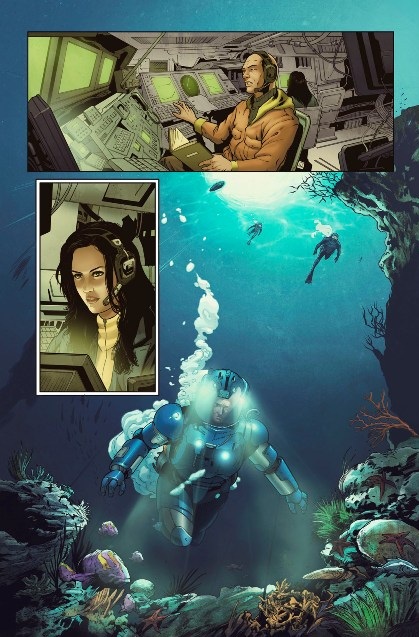 SS: Its funny, because people have two minds on shows like 90210. Now, they have rebooted the show, but at the time I had friends who were in college who would tell me about the 90210 drinking games and people would watch it religiously at Ivy league universities because it was kinda of campy to them.
SS: Its funny, because people have two minds on shows like 90210. Now, they have rebooted the show, but at the time I had friends who were in college who would tell me about the 90210 drinking games and people would watch it religiously at Ivy league universities because it was kinda of campy to them.From the inside, I was writing 90210 and working with those producers and working with Aaron Spelling who was a brilliant, brilliant producer. Each producer wrote a character that was themselves on the show, I wrote a character that their own high school experiences, or that they wished their own high school experiences, were like. I wrote a skiing episode and they wanted Brandon have an argument with Ian Ziering’s character about skiing. I looked up and researched that parabolic skis were a new thing and purists didn't like them. They spent some time talking to me about whether or not to make that the issue because people might not be familiar with issue. It would surprise you that much thought went into each scene of the show and that level of detail, the people who made the original show and I’m sure the people who make the show now, really care about it, that’s why it was so resonant to a lot of people.
RS: You current role is working for a production company, in particular Johnny Depp’s production company. Is there a connection between THE VAULT and your work for the company, and do you think the comic to movie bubble will burst at some point?
SS: Hopefully we will be doing THE VAULT as a movie project through the company, I don’t want to say too much more than that but it looks pretty good for it right now. It’s a wonderful way to work on projects that are my own but that are also good for the company.
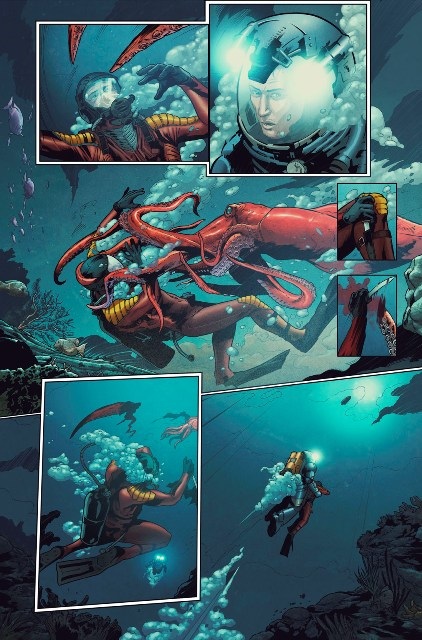 Graphic novels and comics have been mined thoroughly for the last decade and when people go to the comic book conventions people are used to all these comic book movies being set up, but there is a really good rationale for it.
Graphic novels and comics have been mined thoroughly for the last decade and when people go to the comic book conventions people are used to all these comic book movies being set up, but there is a really good rationale for it.Part of it has to do with the fact that you have visuals built in, stories and the like but part of it is that you have to market it. Those things that will seem like nothing to comic book readers but to movie people there’s a big plus in that I can see an eye catching image that will grab people’s attention and herd them into the story.
Unlike the philosophy of ‘don’t judge a book by its cover’, comic books lead with their cover and it is a first piece of judgment. That’s an accepted part of what comic books are all about. The other thing that people may not realize is that there’s such a diverse range of stories available in comic books beyond what people think of with super hero stuff. For example, “Road to Perdition” and lots of stories that people wouldn’t think came out of a comic book actually came from a comic book. I would say that the hype around Hollywood around finding comic book properties has changed. I wouldn't say it is over because there are quite a few companies who have set themselves up based around acquiring a few comic book properties. By the same token, though, what we do here is look at all types of material, we look at comic books, we look at manuscripts for novels, we look at remakes of old films, we look at remakes of foreign films. The source material that makes a good movie can come from anywhere; I think comics just fit within a certain niche of a place to go to find stories to base something on. There’s still a lot of things that are done as spec screenplays that are done specifically for the screen but a lot of stuff is adapted material because it gives producers and studio execs something to look at as a template.
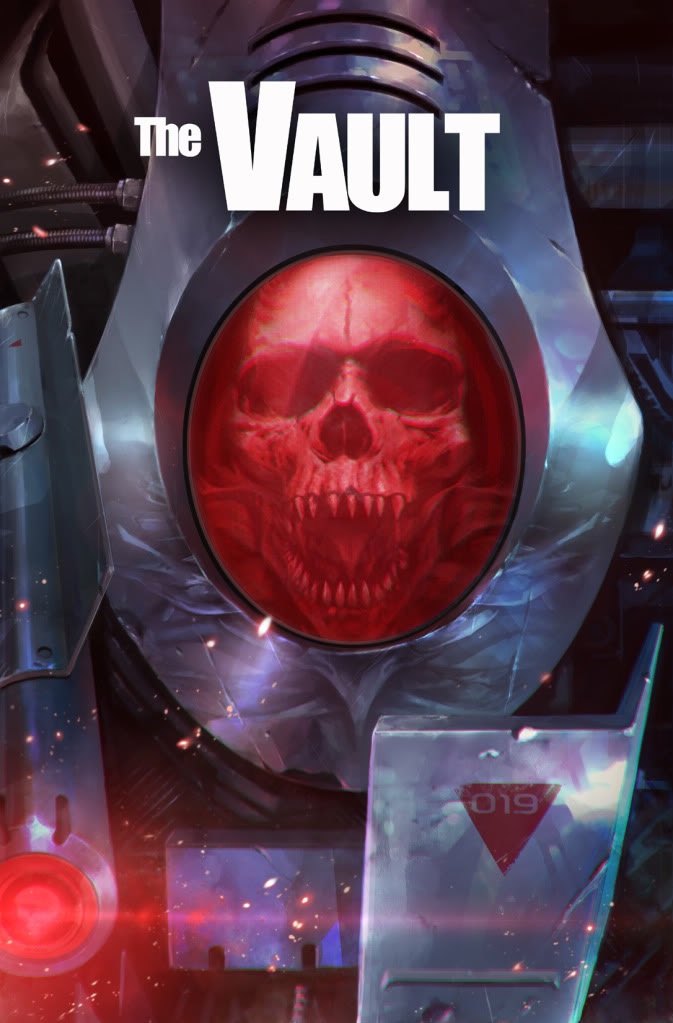 RS: Can you tell us a little about your plans for the future of the comic?
RS: Can you tell us a little about your plans for the future of the comic?SS: This first installment is three issues that we will do as a trade at the end of the year, but I’d really love to keep writing these things and maybe even bring in other writers to tell different VAULT stories. I’m even thinking about doing a VAULT novel.
RS: Sam, thank you for your time and best of luck with THE VAULT.
SS: Thank you.
RS: THE VAULT #1 is on the stands now and published by Image Comics. Issue #2 hits the shelves on August 31st.
You can follow Russ Sheath's blog Russwords here and on Twitter here.
Proofs, co-edits & common sense provided by Sleazy G
